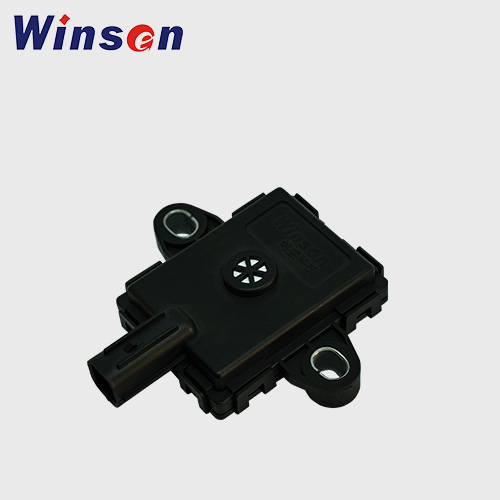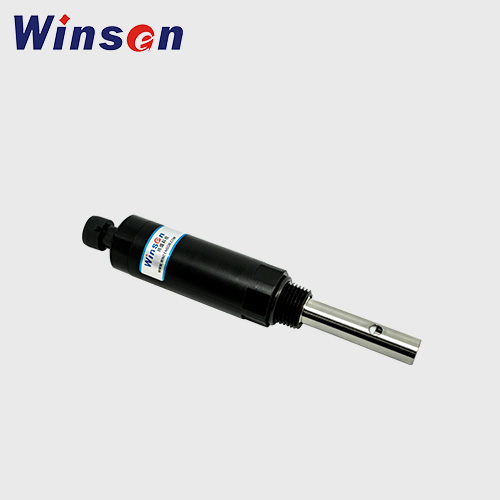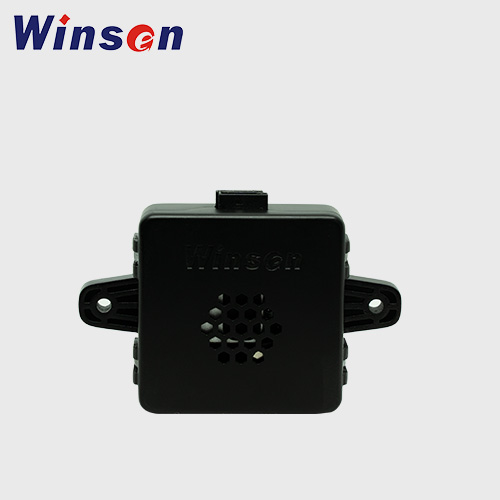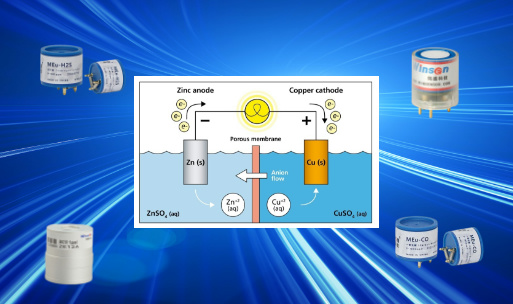Winsen's Automotive Safety Products Enhancing Car Safety through Advanced Sensors
In today's fast-paced world, automotive safety is of paramount importance. Winsen, a leading technology company, has developed a remarkable product line dedicated to automotive safety and compliant with IATF16949 certification. By incorporating advanced sensors, such as Hydrogen Leak Sensors, On-line Coolant Conductivity Sensors, Lithium Battery Thermal Runaway Sensors, and Alcohol Detection Sensors, Winsen aims to sense potential hazards early, make intelligent judgments, and intervene in advance to prevent unnecessary car safety accidents.
Hydrogen Gas Leak Sensor
Definition and purpose of Hydrogen Leak Sensors
The main purpose of hydrogen gas leak sensors in cars is to ensure the safety of hydrogen fuel cell vehicles, which use hydrogen as a fuel source for generating electricity. These sensors play a crucial role in detecting any potential leaks in the hydrogen fuel system including hydrogen storage tank, supply pipe and the fuel engine, which can pose safety risks due to the flammable nature of hydrogen gas.
When a hydrogen leak is detected by the sensor at its fast response (T80 ≤3s) , high resolution of 1ppm, and high accuracy ±10% (>1%VOL H2), it triggers an alarm or warning system in the vehicle. This alert prompts the driver or occupants to take immediate action, such as stopping the car and evacuating if necessary. By providing early detection of hydrogen leaks, these sensors help prevent accidents, fires, or explosions that could occur due to the presence of hydrogen gas.

| Target: | Hydrogen (H2) |
| Model: | ZC61 |
| Detection range: | 0-40000ppm |
| Detection principle: | MEMS |
| Characteristics: | MEMS process,Intelligent algorithms |
| Response time: | ≤3s (T80) |
| Notes: | IATF16949 compliant |
Natural Gas Leak Sensor
Understanding the Natural Gas Leak Sensor (CH4) in automotive safety
Natural gas leak sensors in automotive safety are specialized devices designed to detect the presence of methane gas (CH4) in vehicles that utilize natural gas as a fuel source.
The purpose of these sensors is to ensure the safe operation of natural gas-powered vehicles by detecting any potential leaks of methane gas. Methane is a highly flammable and potentially hazardous gas, so it is important to have reliable sensors that can detect leaks and prevent accidents or explosions.

| Target: | Natural gas, liquefied gas, coal gas, alkanes and other flammable gases |
| Model: | ZC401 |
| Detection range: | 0~100%LEL |
| Detection principle: | Catalytic combustion |
| Output signal: | PWM/CAN/Analog quantity(Customizable) |
| Response time: | T90<10s |
| Notes: | IATF16949 compliant |
On-line Coolant Conductivity Sensor
Understanding the role of On-line Coolant Conductivity Sensors in automotive safety
The antifreeze coolant in fuel cell vehicles must maintain an appropriate level of conductivity to ensure the proper functioning and safety of the fuel cell system. If the conductivity of the coolant exceeds or falls below the recommended range, it may have negative impacts on the performance and reliability of the fuel cell or even stop the vehicle power and cause severe accidents.
Online conductivity sensors provide real-time information by measuring the conductivity of the coolant. These sensors send conductivity data to the vehicle's control system. If an abnormal conductivity level is detected, the system may trigger an alert or take other appropriate measures to ensure the quality of the coolant meets safety requirements. Compared to the Periodic inspection method, the online conductivity sensor provides a safer and more reliable solution.

| Target: | Coolant |
| Model: | ZW-HC101 |
| Detection range: | 0.01~20 uS/cm |
| Detection principle: | Electrochemistry |
| Size: | Coolant Conductivity |
| Output signal: | CAN/Analog quantity(Customizable) |
| Notes: | IATF16949 compliant |
Lithium Battery Thermal Runaway All-in-one Sensor
Definition and purpose of Lithium Battery Thermal Runaway All-in-one Sensors
Lithium battery thermal runaway all-in-one sensors are specialized devices designed to detect and monitor the parameters of CO, H2, CO2, VOC, smoke, temperature, pressure, and other critical parameters of lithium-ion batteries.
The purpose of these sensors is to prevent and mitigate the risks associated with thermal runaway, a phenomenon where the temperature of a lithium battery rapidly increases, leading to a self-sustaining and uncontrollable chain reaction. Thermal runaway can result in fires, explosions, and the release of hazardous gases.
Lithium battery thermal runaway all-in-one sensors are equipped with various sensors and monitoring capabilities to detect and respond to abnormal temperature increases and typical gases release in early stage of the thermal runaway. These sensors are highly sensitive and able to detect target parameters at low level and response fast to provide real-time data on the state of the battery. When a potential thermal runaway event is detected, the sensor triggers an alarm or alert, notifying the user or triggering safety protocols. This allows for immediate action to be taken.
How these sensors detect temperature changes and potential thermal runaway in lithium batteries
 (sinovoltaics.com)
(sinovoltaics.com)During the charging and discharging process, lithium batteries undergo complex internal reactions involving various key parameters such as temperature, pressure, and gas composition. High temperatures can lead to thermal runaway, abnormal pressure may indicate internal short circuits or gas leakage, and the generation and concentration changes of specific gases are directly related to the battery's safety status. Therefore, comprehensive and accurate monitoring of these parameters is essential to prevent safety incidents.

| Target: | CO, CO2, VOC, temperature, pressure |
| Model: | ZEQH-101 |
| Detection range: | CO:0~1000ppm CO2:400~10000ppm VOC:200~10000ppm Pressure:0 ~130kPa Temperature:-40℃~200℃ |
| Detection principle: | Planar semiconductor NDIR |
| Output signal: | CAN/LIN(Customizable) |
| Response time: | T90<15s |
| Notes: | IATF16949 compliant |
Alcohol Detection Sensor
Understanding the importance of Alcohol Detection Sensors in automotive safety
Alcohol detection sensors, also known as alcohol breathalyzers or ignition interlock devices, play a crucial role in preventing drunk driving and ensuring the safety of drivers, passengers, and others on the road.
The primary purpose of alcohol detection sensors in automotive safety is to detect the presence of alcohol in a driver's breath and prevent the vehicle from being operated if alcohol is detected above a certain threshold. These sensors are typically installed in vehicles, particularly in those of individuals who have been convicted of driving under the influence (DUI) offenses.
When a driver breathes into the alcohol detection sensor, it measures the concentration of alcohol in their breath. If the alcohol concentration exceeds the predetermined limit, the sensor sends a signal to the vehicle's ignition system, preventing the engine from starting or allowing the vehicle to operate.
By incorporating alcohol detection sensors in vehicles, it acts as a deterrent and ensures that drivers who are under the influence of alcohol are unable to operate their vehicles. This helps reduce the risks of accidents, injuries, and fatalities associated with drunk driving.
Alcohol detection sensors are especially valuable for individuals who have a history of DUI offenses or are required to use ignition interlock devices as part of their legal requirements. These sensors provide a means for monitoring and enforcing sobriety, promoting responsible driving behavior, and ultimately making the roads safer for everyone.

| Target: | Alcohol |
| Model: | Alcohol Detection Sensor |
| Detection range: | 0~440mg/100ml(0~2mg/L) |
| Detection principle: | Electrochemistry |
| Output signal: | CAN/LIN(Customizable) |
| Response time: | T90<5s(above 0℃);T90<15s(below 0℃) |
| Notes: | IATF16949 compliant |
Conclusion
Winsen's automotive safety product line, consisting of Hydrogen Leak Sensors, On-line Conductivity Sensors, Lithium Battery Thermal Runaway Sensors, and Alcohol Detection Sensors, demonstrates their commitment to revolutionizing car safety. By incorporating advanced sensors and technologies, Winsen aims to sense potential hazards early, make intelligent judgments, and intervene in advance to prevent unnecessary car safety accidents. These innovative products have the potential to enhance the safety of vehicles, reduce risks, and contribute to a safer and more secure automotive industry.







